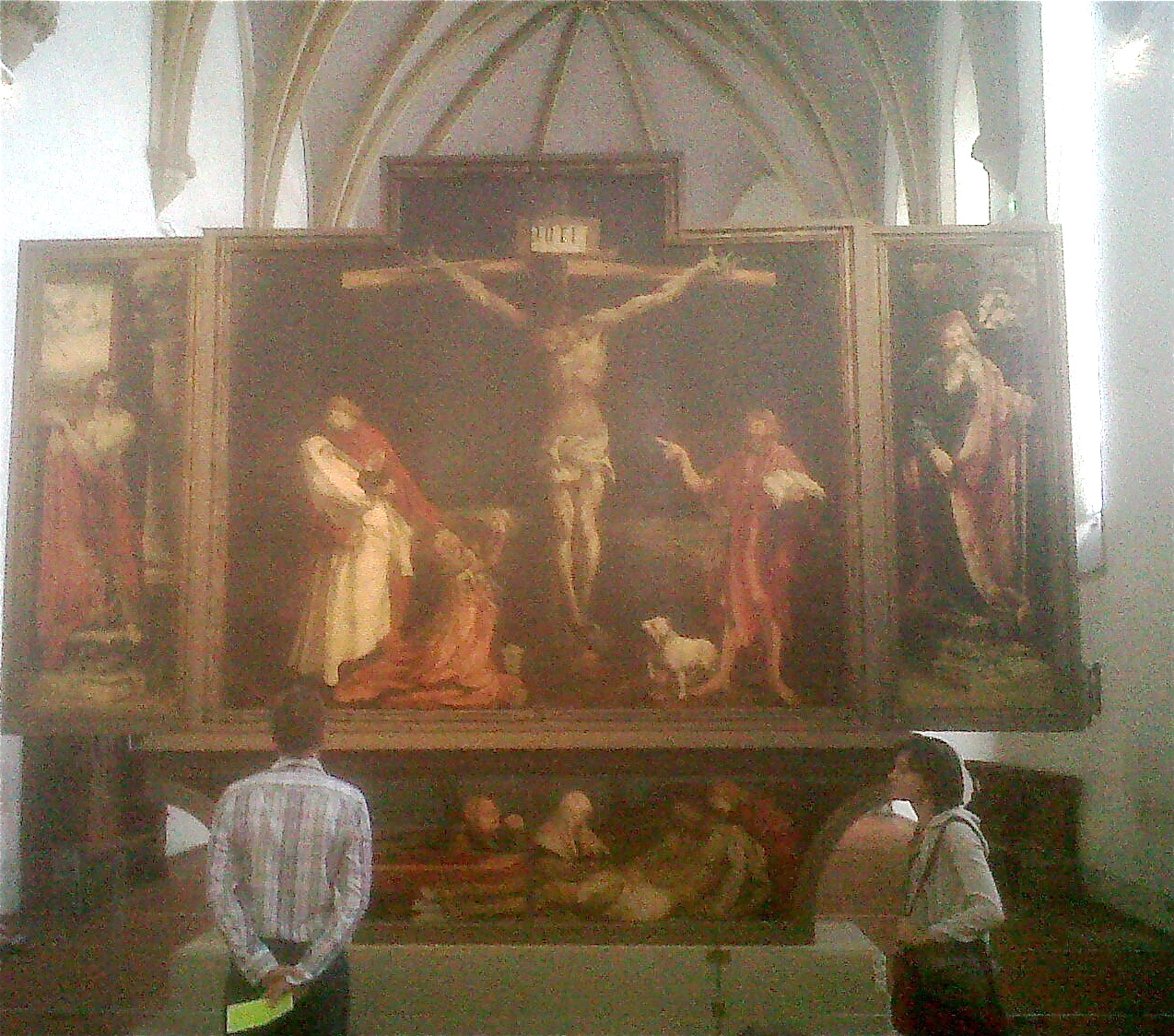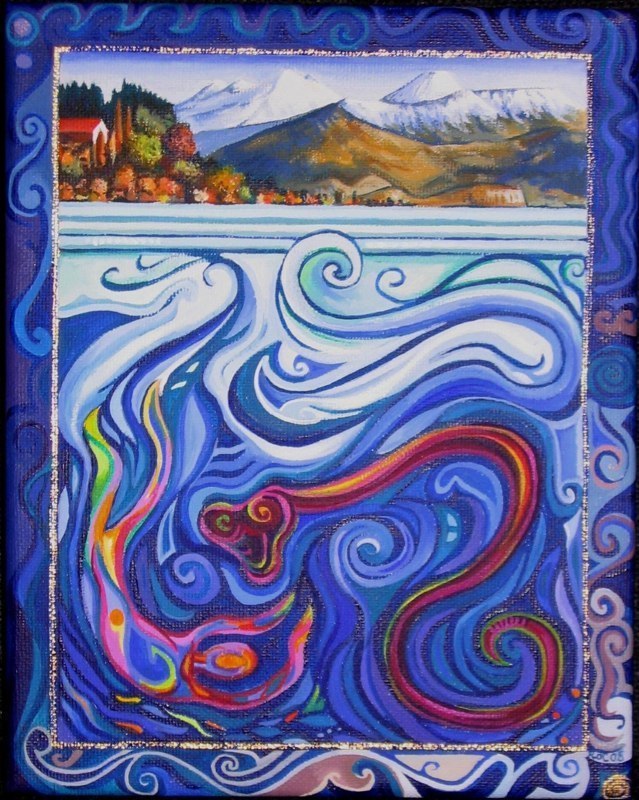Sometimes there is an artwork which stays in your heart and mind. The Isenheim Altar piece is for me one one such work.
My first degree was in Religious Studies and Art. For my dissertation I studied the Isenheim Altarpiece attributed to Mathias Gruenwald and painted in 1506 - 1515. Originally painted for the Monastery of Saint Anthony in Isenheim it is now on display in the Unterlinden Museum in Colmar, France. The monks at the monastery were known for their work with people with skin diseases and from the Altarpiece's tortured figure of Christ on the Cross you can see the artist had this in mind.
I don't have a copy of my dissertation but I certainly remember writing it. It was during Lent 1996. I was staying in the house of a Franciscan Nun (third order) who was away. In Dove Cottage there was no television and few disruptions so I could focus on the task at hand. For hours I meditated on the crucifixion and explored its symbolism, form and theological meaning and of course the house was full of other religious imagery. Deep stuff but also quite poignant as I was myself going through a period of grief and suffering. I can remember stuffing the stove with wood to keep warm and huddling beside it giving thanks that I wasn't called to be a monk! My suffering though was not caused by the cold but rather was an ailment of the heart.
I wrote of the arms of the crucified figure of Christ being stretched out to the cosmos distorted by the hatred of man. Hands that had once been the hands of a carpenter, hands that created. I reflected on the feet of Jesus so disfigured and grotesque a large nail tearing them apart. It was all very disturbing. I wrote a letter to Sister Wendy Beckett a famous art critic to ask her thoughts about images of the crucifixion. She very kindly wrote back saying she found it to painful to spend time meditating on such images. I cherish this letter. Fifteen years later I travelled to Colmar to see for the first time in real life the Isenheim Altarpiece. Travelling through beautiful countryside on the train from Paris I shared with a friend memories of my time in the cold little house of the Franciscan nun, my need for warmth and of my inner turmoil at the time. Memories flooded back. I remembered a retreat to a Franciscan Monastery in Dorset not long after my stay at Dove Cottage. Sitting in the chapel I gazed at the Franciscan Cross. Unlike the Isenheim Triptych the Jesus on this cross is sleek and beautiful. For a moment I visualised him leaning over and surrounding me with his arms in a warm embrace followed by the cross which enveloped us both. I felt a mixture of love and empathy mixed with a little fear. I wondered about the significance of this vision (if I can be allowed to call it that). Is love never experienced without suffering?
Standing in front of the Isenheim triptych I gave thanks for past lessons. Lessons learnt? Well thats another blog entry but I certainly stood as someone without regrets. I was also pleased to see the altarpiece had been displayed so that all the panels could be seen. The beauty and vibrancy of Gruenwald's resurrection stood in stark contrast to his crucifixion. Here Christ dances in the air in a flamboyant display of joy and victory swathed in beautiful colours and divine light. Fifteen years is a long time to wait to see the resurrection but I was happy.
For the remainder of my time in France I stayed with my friend's uncle and aunt who showed wonderful hospitality. I sat in their garden feeling the warmth of the sun, ate great food and listened to my friend play the piano while we sang songs of love and memories. www.musee-unterlinden.com/isenheim-altarpiece.html






